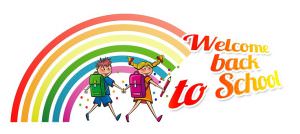
One of the biggest “rites of passage” may be a college transition; when a “child” enters into pseudo adulthood surrounded by thousands of others in the same boat or becomes part of the “blind leading the blind.” Jokes and puns aside, transitioning into college takes work and requires skills related to organization, good decision making, ignoring or standing up to peer pressure, wellness, and resilience strategies to keep self-esteem high during times of confusion and despair.
Many young adults have little to no practice structuring their new life which requires setting a schedule to eat, do wash, study, socialize, go to class, exercise, join clubs or sports, pay bills, and sleep. Their prior school years followed a schedule that repeated for 12 years, and their parents or guardians took care of the rest.
College Fit or Not
Although there are many college students who are motivated and have been independent for both basic needs and survival before they arrived at college, many of their friends need help. Some problems students face are those of fit, belonging, and opportunity.
Fitness of the environment:
A college visit and a few reviews of the catalogue does not a fit make once the student has unpacked the clothes, plugged in the computer, and purchased a meal plan. Young adults who may have thought they wanted a large big time football, 300 student lecture hall, stand in line and walk a mile for a meal campus may think differently once the semester has begun especially if isolation occurs (same holds true for students who picked a small school with very little going on). Some students may try to stick out the semester and figure where to go next while others will have to leave immediately to keep both their sanity and desire to learn. Do not write this emotion off as home-sickness, for some it may be, but for others a constant noise has erupted inside that has left the young person off-center and in need to find level ground.
Students who want to leave can speak with a career counselor at the college or university to assist them with; determining if there is a refund, if semester courses can be completed on-line, and how to transfer to another school. Fit is very important and like shoes that may look nice, it is not until you walk around in them to know how they feel – if they don’t feel right you get another pair – so it can be with a college or university.
Belonging with others:
Some students love the idea of what college life can offer, academics, athletics, arts, activities, freedom, and much more. However, all of those offerings are mainly done with other people – some students come from very privileged backgrounds and have traveled the world, and others may be the first generation to attend college – sometimes these prior lifestyle identities clash and the disconnect pushes a student away from a desired group.
Every college is a community and has a cultural identity – some are accepting of many cultures and ways of life and others are selective, biased, and unwelcoming. Beyond cultural bias are those schools that demand one to learn in a prescribed way and are not creative, design, or problem-based in their educational approach and creative thinkers begin to shut down. Just as an environment needs to fit the student, so does the student need to feel belongingness as a resident of the college community.
Often times when a student does not feel he or she belongs, it is best to seek out colleges that have similar offerings with a demographic that best suits the personality of the student – there will always be time to broaden a lifestyle, making the college experience meaningful is the first step in growth.
Opportunities: College
College is to prepare students for the “real world” and assist them in contributing to society in a field they are interested in by utilizing newly learned skills and talents. As the millennium grows massively in technology, global communication, and cultural stewardship, the future graduates need to be innovative, entrepreneurial, compassionate, and critical thinkers. Some colleges and universities are not ready for this growth challenge and their traditional learning delivery can stifle creative and entrepreneurial thinking. Students who choose these traditional institutions will have to self-advocate, challenge professors, and any wrote method of instruction, and seek out learning and professional opportunities to set him or herself apart from college mates.
Opportunities: Home
College students no longer have to live or commute to a campus in order to learn core subjects as on-line learning is available to anyone who wants to learn and grow. On-line learning is affordable, flexible, and at times free especially from many MOOCs (Massive Online Open Courses) offered from top level universities and colleges across the country. Students who may have taken the “throw caution to the wind, have fun, social road” while beginning college, have an opportunity to close skill gaps by adding a few MOOCs to the resume and establishing an on-line community of like-minded peers.
PARENTS Pay Attention: 
Many college students have no issues, adapt well, and share their new energies and celebrate their new freedoms, however other students don’t have it as easy.
As mentioned earlier, parents need to pay attention to college transitions when fit, belonging, and opportunity don’t happen for the young person. Often times it is chalked up as “Homesickness” and comments are made to “Suck it up,” “try harder,” or “You are not allowed to come home this weekend,” these comments may be the jolt to get the child back on track or may be the dagger that depresses the child more. Use caution with words when transition is not going smoothly, the child may actually need a divorce from the new relationship and parents can assist by welcoming the young person’s decision with favor, support, and love.
Students Seeking Counseling Increases:
Current statistics indicate that college students seeking help at on-campus counseling centers has increased 30% between 2010 and 2015 and that 61% of those students seeking help are reporting anxiety, depression 49%, stress 45%, family issues 31%, academic 28%, and relationships 27%.
These numbers suggest many young people are not transitioning smoothly and need help that is hard to get. Nationally, the mean student to counseling staff ratio is 1,737:1 (institutions less than 1500 students ratio is 705:1 and larger institutions of 35,000+ the ratio is 2,624:1) so unless the student self-advocates and takes action in seeking help he or she may not get it. (Center for Mental Health 2016 Annual Report and The Association for University and College Counseling Center Directors Annual Survey, 2016)
Stress is real with roots that are tangled in many areas of wellness; sleep, relationships, nutrition, exercise, change, mindset, goal setting, resilience and more. Transitions at any age are tough and college age students feel social, family, and internal pressure to get it right the first time, some will and some will not and it is vital that we assist those who don’t get it right the first time ASAP. College and university students are young adults with a different mailing address for their next 4-5 years – let’s keep in touch with their lives – it will make the difference and hopefully lessen the counseling centers’ numbers.
Resources on Fit, Belonging, MOOCs:
Check out the College Board’s comments related to dorm living from current and former college students. If your first pick doesn’t work then seek out new options by utilizing The ((Ed.gov))/news/press-releases/gainful-employment-regulations”>United States Department of Education (((Ed.gov))) to understand steps that are being taken to protect college students from ineffective career college programs and become aware of federal programs available for MOOCs Directory.
**Note: Ineffective career college program protection and Public loan forgiveness were part of the Obama Administration and may no longer be funded as of 2018 depending on the education budget – so stay current on options for protection and federal loan repayment.






 e school transitioning is not a leap into learning, structure, or a status of independency. The reality of finding, maintaining, or walking away from “summer friendships” is a challenge, as is becoming comfortable with structure in environment and in learning and discovery. Children who feel these clouds are more likely to miss out on intellectual development, and certainly will need support to grow socially and emotionally. These second graders still are the little ones who may be shy, may have no siblings, have not had the chance to flourish in language, peer interaction, or have not broken away from a parent/guardian/caregiver.
e school transitioning is not a leap into learning, structure, or a status of independency. The reality of finding, maintaining, or walking away from “summer friendships” is a challenge, as is becoming comfortable with structure in environment and in learning and discovery. Children who feel these clouds are more likely to miss out on intellectual development, and certainly will need support to grow socially and emotionally. These second graders still are the little ones who may be shy, may have no siblings, have not had the chance to flourish in language, peer interaction, or have not broken away from a parent/guardian/caregiver. 
 What does a cloudy day look like and how can those clouds get chased away – maybe it’s a conversation with a teacher, or a parent of another child who may be related to some friction that is occurring, or an understanding of the child on how he or she is internalizing the environment.
What does a cloudy day look like and how can those clouds get chased away – maybe it’s a conversation with a teacher, or a parent of another child who may be related to some friction that is occurring, or an understanding of the child on how he or she is internalizing the environment. 











